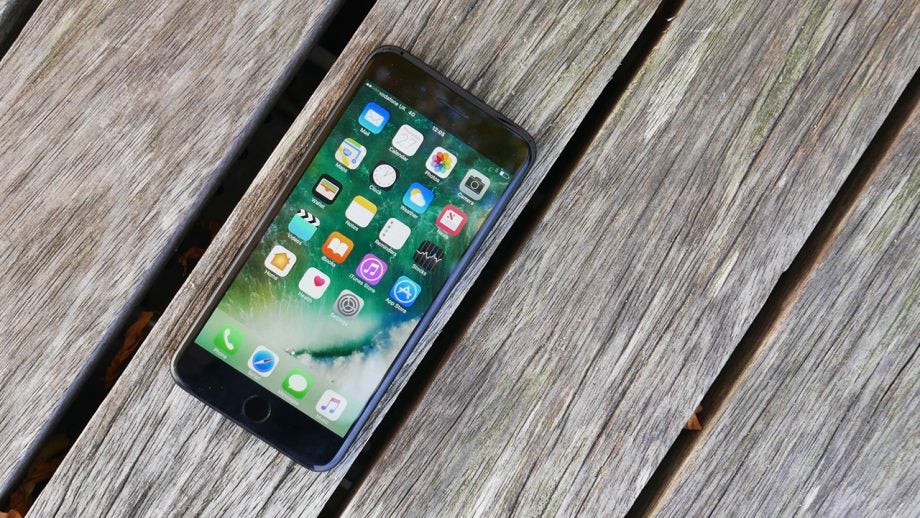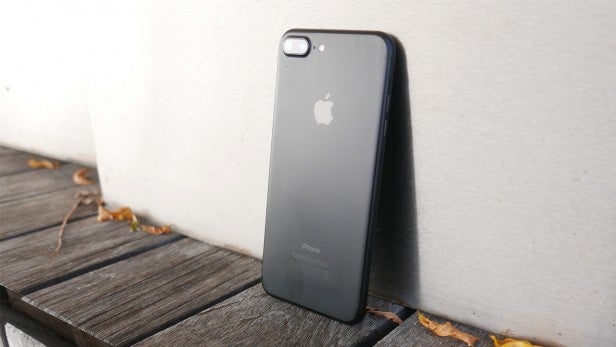iPhone 7 Plus Review
iPhone 7 Plus Review
The iPhone 7 to get your wallet out for

Sections
- Page 1 iPhone 7 Plus Review
- Page 2 Performance & iOS 10 Review
- Page 3 Camera Review
- Page 4 Battery Life & Verdict Review
Verdict
You get a lot for your money compared to the iPhone 7- the 7 Plus provides a luscious 5.5-inch screen and a clever camera – but, most importantly, battery life you can rely on. If you can live without a headphone jack, this is a great upgrade from an iPhone 6 or iPhone 6 Plus. If you already own a 6S Plus then the differences aren’t so pronounced.
Pros
- Beautiful screen
- Unique camera
- Solid battery life
- Class-leading performance
- Potent speakers
Cons
- Expensive
- No headphone jack
- Largely unchanged design
Key Specifications
- Review Price: £719.00
- 5.5-inch Full HD screen with wide colour gamut
- A10 Fusion processor with 3GB RAM
- Water-resistant IP67
- 12-megapixel telephoto camera
- 7-megapixel selfie camera
- 32, 128 & 256GB storage options
- 2900mAh battery
Who is the iPhone 7 Plus for?
Apple’s latest phablet takes the familiar iPhone formula and tweaks it once again. It’s not going to wow you with a new design or massive innovations, but the iPhone 7 Plus is a great phone. It offers everything the iPhone 7 does – speedy performance, water resistance, loud speakers, great cameras – but adds some clever features that in many are more important than flashy specs.
On the other hand, the 7 Plus costs a small fortune. The weakened pound means this is the most expensive iPhone we’ve ever seen released in the UK. If you’re dead set on an iPhone, though, this is the one I’d recommend, not least because the iPhone 7 Plus’s battery life is excellent.
iPhone 7 Plus – Design
The shape and feel of the iPhone 7 Plus is very much like that of the two versions before it. It’s big – properly big – especially when you add a case to it.
Yes, it has an expansive screen, but it’s the iPhone 7 Plus’s height that makes it a handful.
If you haven’t used a phablet before, it’s worth testing out first. I found it takes about a week to get accustomed to a larger phone, but I wouldn’t go back. There’s just so much more you can do with a screen this size, but some will struggle to use it easily.
• Read our iPhone XR review

In other respects the design has been refined a little. The antenna bands that strapped the back now curve across the top and bottom edges of the phone. On the back there’s a far more pronounced camera bump.
There are two brand-new iPhone 7 Plus colours to choose from and both feel very different. The first is Jet Black, which has a slick, almost ceramic, feel to it. It looks fantastic, it’s grippy and it’s the colour I’d choose. There are a couple of catches, though: you’ll need to polish it regularly to get fingerprint marks off it, but more worryingly it marks with fine scratches a little too easily. If you do choose it, you’ll need to treat it with kid gloves to keep it looking its best.
Related: Best iPhone Deals
The new Black version looks like a darker version of Space Grey. Oddly, though, it doesn’t have the same grippy texture as other iPhone colours, which means it’s a bit slippery. I wouldn’t use it without a case, but when you’ve seen as many smashed screens as me, you’d use a case for any phone.
Those alterations are all cosmetic, though. There are three really important changes of which you should be aware when it comes to the 7 Plus. The first is that it’s water resistant to an IP67 rating. That means you can submerge it in up to 1m of water for up to 30 minutes. It’s a great addition to the iPhone – especially if, like me, you’ve accidentally dunked phones and ruined them in the past.

The second is a change to the iPhone 7 Plus’s home button. Gone is the iconic click to which we’ve become so accustomed. It’s not a button at all now, but rather it’s a capacitive pad. It recognises your fingers in much the same way as the touchscreen does, so that means you don’t actually depress it. Instead the clever boffins at Apple have used the rumble provided by an upgraded Haptic engine to make it feel as if it’s been pressed.
It works, too. It took me minutes to get used to the new feel, and now I prefer it – if only because it’s a lot less likely to go wrong now that it’s no longer mechanical. Of course, it still comes with the excellent Touch ID fingerprint scanner built in.
The third big change will likely affect you the most. It’s the now infamous removal of the traditional 3.5mm headphone jack. Yes, it’s an annoying omission, but it hasn’t bothered me as much as I thought it would.
The 7 Plus comes with a small cable adapter that is now permanently attached to my Sennheiser Momentum 2.0 headphones, and you also get a pair of Lightning EarPods for good measure. What Apple is really trying to do here, though, is move us all towards wireless headphones. I’m a convert to them simply for their convenience, and there are now plenty of excellent wireless headphones to choose from.
Judging from Apple’s launch of the iPhone 7 Plus, another reason for removing the headphone jack was to accommodate the new Haptic engine. It does add a new element to using the phone – vibrations are now a lot more nuanced, so you can tell what type of notification you’re getting without having the sound on, or looking at the screen.
Related: Best Wireless Headphones to Buy

The iPhone 7 Plus looks good, but it’s not groundbreaking. This is still essentially the same design we saw with the first Plus two years ago. Unless you go for the Jet Black option, owning an iPhone is no longer the design statement it once was. The big question is whether the water resistance and better Haptics are enough of trade-off for the lack of a headphone jack. I’d like the 7 Plus to have it all.
iPhone 7 Plus – Screen and Speakers
Full HD resolution sounds old hat now. Plenty of phones from Samsung, LG and others have packed ultra-sharp quad-HD screens for years. The iPhone 7 Plus doesn’t follow suit and keeps to what Apple designates as a “Retina” display. This just means you can’t really see the pixels, but the pixel density isn’t as high as on, for example, the Samsung Galaxy S7.
I don’t care one jot. This is my favourite display on any phone, regardless of resolution.
Full HD is still plenty sharp for everything barring virtual reality, where the screen sits an inch from your eyes and is amplified by lenses.
The iPhone 7 Plus’s screen might not have the highest resolution, but it has the widest colour gamut. It uses something called DCI P3, a range of colours used by movie makers that encompasses a larger spectrum, allowing for more realistic and diverse tones.

It looks superb, with the extra area afforded by the bigger screen making it even better than on the 4.7-inch display of the smaller iPhone 7.
The colours are great, but it’s also bright, so it can be viewed even in strong sunlight. It helps that it’s not very reflective either.
Bingeing on Netflix is a joy, particularly if you use the tremendous built-in speakers. These are excellent – for a phone. For starters, they’re very loud – loud enough that I was easily able to hear over the cacophony of a busy kitchen with the kettle boiling and frying pan sizzling. They’re not particularly refined, however. At the top volume the iPhone 7 Plus can sound a little harsh, and there’s very little bass. Still, they’re top-notch for a phone.
How we test phones
We test every mobile phone we review thoroughly. We use industry standard tests to compare features properly and we use the phone as our main device over the review period. We’ll always tell you what we find and we never, ever, accept money to review a product.


